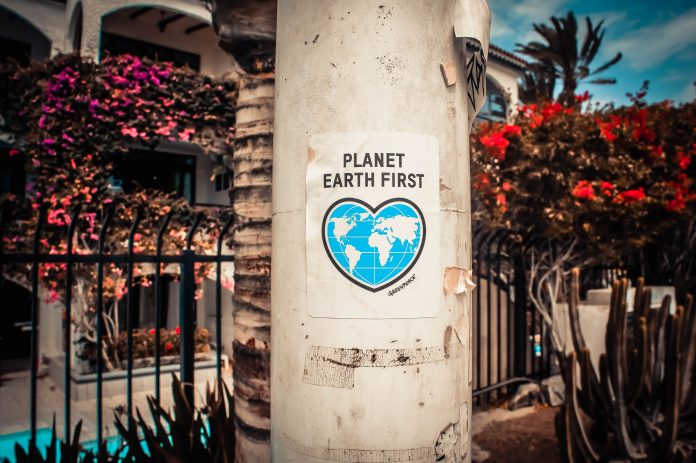According to the UN, the number of microplastics found in the seas reached 51 trillion – this is 500 times more than the number of stars in our galaxy. From there, microplastics can find their way into our food, drinks, and air, and can impact our lives in more ways than you can think of.
But plastic is not the only source of pollution that threatens our world. Manufacturing and transportation heavily pollute the air, while agricultural activities take a toll on the health of our soils. Luckily, nations all over the globe are becoming more and more concerned with finding ways to fight global pollution before it is too late. While not all of them exceed in being environmentally-friendly, there are countries that serve as real positive examples. Below are the top 7 most eco-friendly countries in the world, along with reasons why they made the list.
Finland
Finland is number one on the list, with a 2018 environmental performance index (EPI) of 90.68 out of 100. The country managed to get the score because of its commitment to becoming a carbon-neutral society by 2050. Currently, more than 35% of the country’s power comes from renewable sources, particularly wind power. By 2050, they plan to raise their use of renewable energy to 50%.
Recycling is encouraged both in public places, as well as in households. The majority of supermarkets have recycling stations, where people can return plastic and metal packaging in exchange for shopping vouchers.
Additionally, conservation groups are continuously working to protect and nurture endangered species, such as the Saimaa ringed seal, which is the rarest seal in the world.
Iceland
Iceland is second on the list, but sits very close, with an EPI or 90.51. The country’s most notable work is the Hellisheiði geothermal power plant, which can produce 303MW of energy. This makes it one of the largest geothermal power plants in the world.
To fight air pollution, the government will soon allow municipalities to temporarily ban, or limit car traffic. This comes after nitrogen dioxide measured above safe limits three times in Reykjavík, most recently in November 2019.
The country is doing so good with fighting pollution, that in 2018 signed a $250 million contract with China, to provide technology for producing geothermal energy.
Sweden
Completing the podium is Sweden, with an EPI of 90.43, and numerous plans to increase those numbers. Back in 1996, Växjö, a city in Sweden, was the first city in the world to completely remove fossil-fuel by 2030. The plan seems to be working out, as, in 2014, the city’s CO2 emissions measured 2.4 tones, compared to the EU average of 7.3 at the time.
What’s more, Gothenburg, which is Sweden’s second-largest city, takes pride in its 1,200 km long district heating network, which heats 90% of the city’s apartment buildings.
Bees and butterflies are some of the most important beings in the world, and Swedes know that very well. Many organizations in the country are fighting to populate urban settings with beehives and pollination habitats, turning rooftops into real meadows to help with insect repopulation.
Denmark
Northern countries seem to dominate this list, with Denmark taking number 4. Their EPI of 89.21 was possible due to tremendous investments in clean air technologies. One of the most popular practices for business waste management is using balers and compactors to press garbage, in order to easily dispose of it. Balers are ‘Ballepresser’ within Denmark people and have become almost an indispensable equipment inside business headquarters all over the country.
According to recent reports, since 1980, global water use continued to increase by 1% every year, and the trend is not expected to stop until 2050. Denmark knows this very well and is working to reduce water waste by increasing tap water quality, in order to prevent people from buying bottled water. Numerous companies in the private sector are also supporting the country, aiming to reduce their water usage by 30, or even 50% in some cases, all by 2025.
Slovenia
Slovenia may not be a popular vacation destination, but Green Destinations, a Netherland-based organization, has named the country the world’s first green destination. Their 88.98 EPI may have had something to do with it. The country is taking huge steps in nurturing sustainable tourism, hoping to inspire other, more popular destinations to do the same.
What’s more, the country ranked fourth in EU in plastic packaging recycling, managing to reuse 60% of its plastic package waste, compared to the 42% EU average. This comes as no surprise, however, as back in 2013, when environmental pollution was less of a media buzz, Slovenia was the EU country that made the most significant progress in waste management.
Spain
After struggling for a while, Spain’s EPI of 88.92 was possible due to massive efforts from both the government and companies in the private sector, to provide Spaniards with means to fight pollution. One such initiative was the “Muévete en verde” (Move in green) project, which aims to reduce CO2 emissions, by planting gardens on the bus rooftops, as well as on top of bus shelters.
But what seems to benefit Spain the most is their culture. Even though the country tries to renounce part of its more traditional aspects of life, the Spanish have many customs that are eco-friendly, and they do so before going green became a trend. Taking short showers, drying clothes outside, as well as walking or taking the bus, instead of using their personal car are just a few of them.
Portugal
Closing our top 7 is Portugal, with an EPI of 88.63. What drew attention towards the country was something that happened back in 2016. The country ran on 100% renewable energy for 107 hours straight, from May 7th, until May 10th, 2016. The experiment was very well perceived by multiple organizations around the world and was deemed a significant achievement for Europe.
One of the major pollution factors in the country is tourism, which has increased tremendously in the past few years but is attempting to fight the trend and find ways to keep tourists coming, while also promoting eco-friendly practices.



































